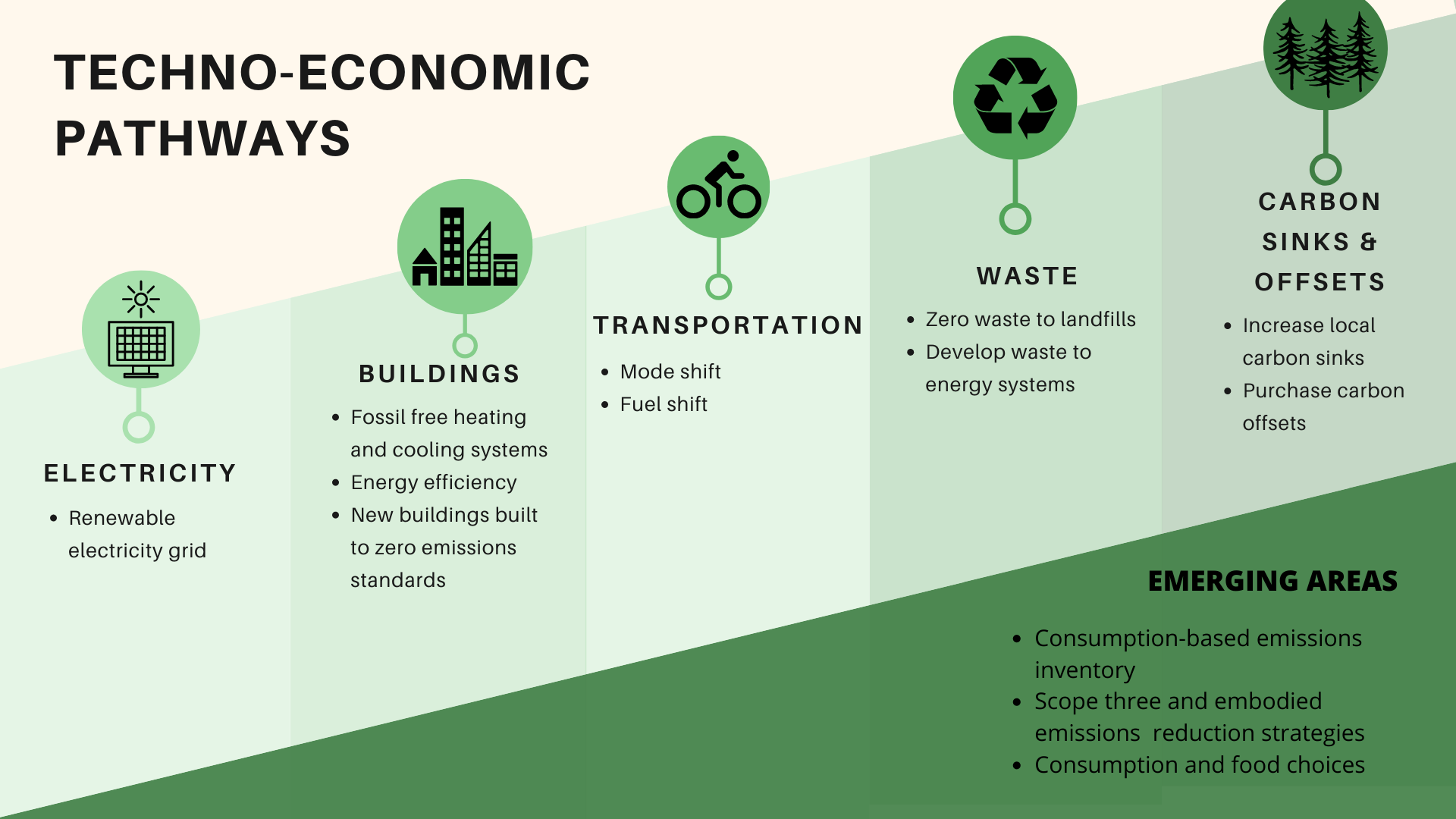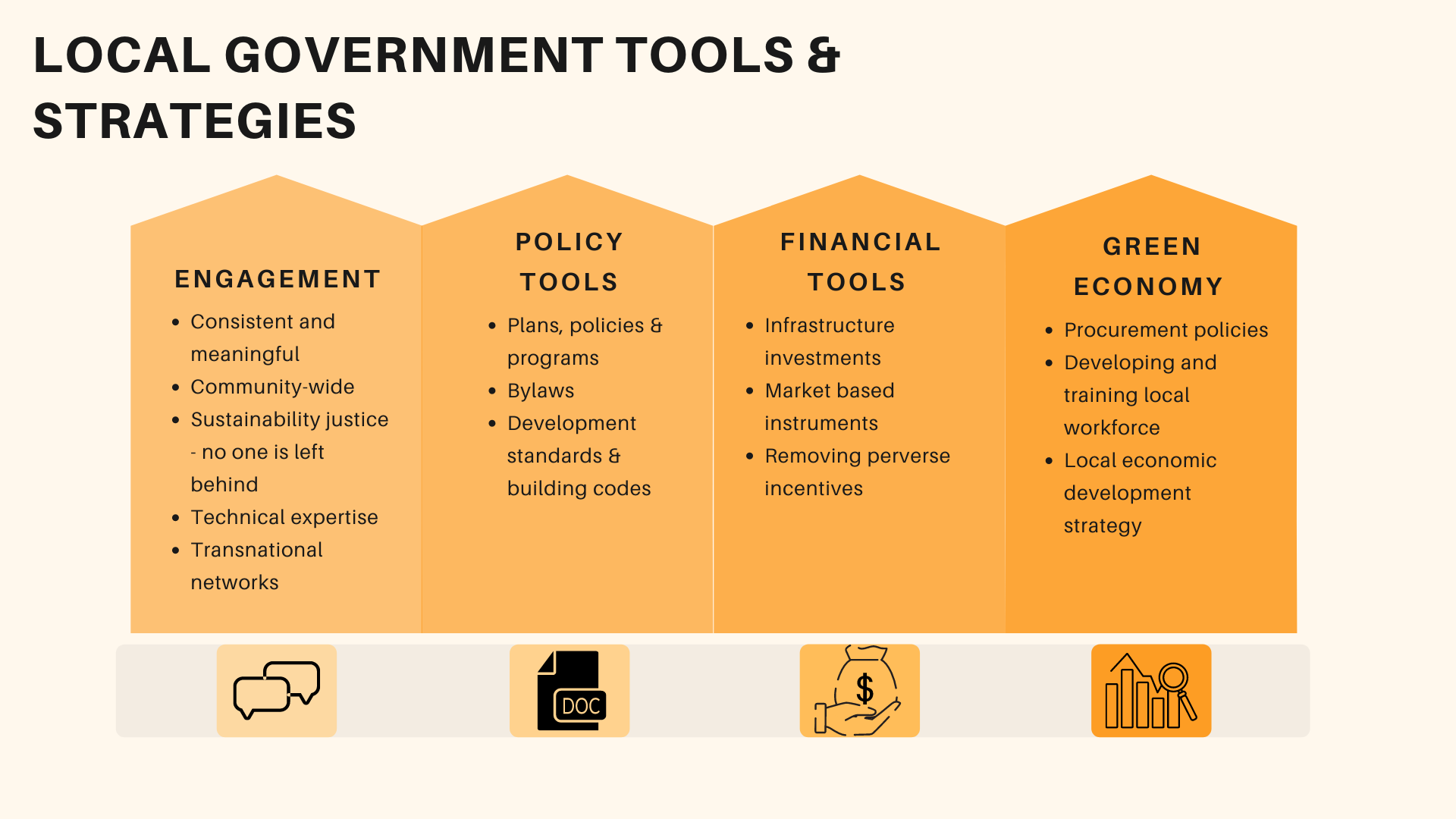What is Deep Decarbonization?
Decarbonization means overcoming carbon lock-in to eliminate fossil fuel use and reduce greenhouse gas emissions to zero. It is a complete transformation of the systems and technologies that rely on fossil fuels and requires a rethinking of institutional structures. It can use a polycentric approach to tackling climate change, where many actors at many levels undertake mitigation activities. This project defines local deep decarbonization as pursuing an 80–100% reduction in greenhouse gas emissions and integrating net-zero carbon into urban systems.
Deep Decarbonization at the Local Level
Over 76% of global GHG emissions occur in urban areas. Local governments have control of up to 50% of those emissions, putting them at the forefront of climate action. Local governments must not only develop technical pathways to decarbonize the main emitting sectors, but they must also develop strategies to implement actions that will embed it in institutional frameworks and steer the local economy towards a low-carbon one. Local governments must develop a clear vision for decarbonization with a well-thought-out and back-casted climate action plan. This plan must address issues of carbon lock-in, help to foster technological and societal change, and must incorporate sustainability justice to ensure that no one gets left behind. The infographic below depicts the four key elements of deep decarbonization at the local level:
Technical Pathways & The Priority Sectors
Technical pathways provide a common method by which governments, businesses, civil society, and researchers can communicate, compare and debate differing concrete visions for deep decarbonization. Pathways are increasingly being used to communicate stories about large-scale transformations. They also aid in the design and implementation of short-term policy packages that are consistent with long-term global decarbonization.
The first element to decarbonization at the local level is to decarbonize the electricity supply by switching to renewable and zero-emission sources of energy. The second element is to transfer clean electricity into other sectors such as transportation and buildings. Fourth, address waste going to landfills through waste reduction programs of waste to energy systems. And last is to increase carbon sink capacity and purchase carbon offsets for areas where fossil fuels are still needed as well as for achieving negative emissions. Along with the technical pathways that address GHG emissions by sector, cities must institutionalize deep decarbonization by taking actions that ensure the commitment, and involvement of stakeholders to reinforce deep decarbonization. The infographic below depicts the five technical pathways (electricity, buildings, transportation, waste, carbon sinks & offsets) and four priority sectors (electricity, buildings, transportation, waste):

Strategies & Tools
Cities must not only develop technical pathways to decarbonize the main emitting sectors, but they must also develop strategies to implement actions that will embed it in institutional frameworks and steer the local economy to a low carbon one. Cities must have in place goals and targets that will help to embed climate action as an integrated agenda within local government priorities. The types of strategies available to local governments for the implementation of climate actions have been categorized as engagement, policy tools, financial tools, and green economy. The infographic below depicts the four types of local government tools & strategies:

Governance Structures and Mechanisms at the Local Level
Within the local context, the governance of climate action is multi-faceted. The legal and policy frameworks for climate action are established by local governments, though local climate governance can take place through actions designed and implemented by non-government actors, including businesses, non-governmental organisations, communities, and other stakeholders. A governance structure or framework refers to how power and decision-making are distributed within an organization. Emerging frameworks for urban climate governance address the importance of a collaborative, multi-actor approach and vertical and horizontal coordination. The infographic below depicts the five types of governance structures and mechanisms:

This content has been derived from: